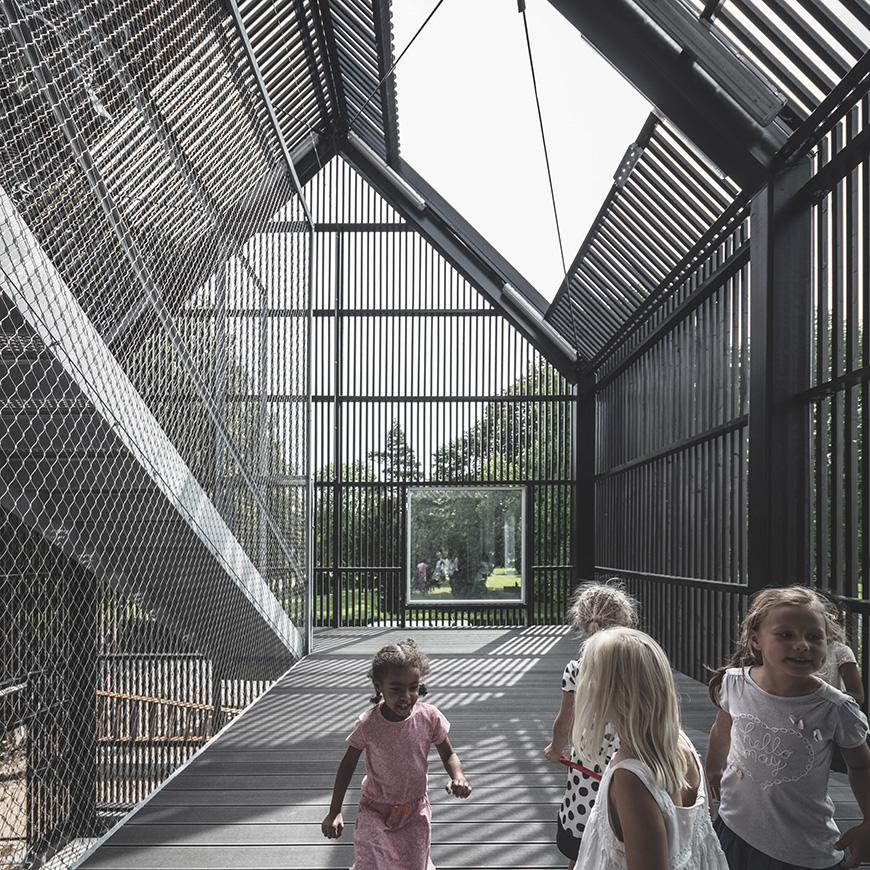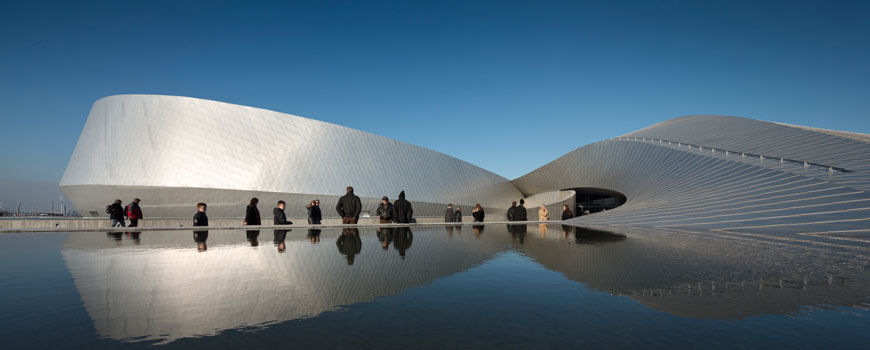COBE’s kindergarten in Copenhagen is a fairytale village
The Frederiksvej Kindergarten by COBE; view from the south; photo © Rasmus Hjortshøj – COAST.
COBE’s kindergarten in Copenhagen is a fairytale village
Designed by Danish architectural firm COBE, a kindergarten in Frederiksberg, a mid-sized city part of the Copenhagen urban area, stands apart from other similar buildings for the deep integration between its architecture and educational concept.
Completed in 2015, the school – which is named Frederiksvej Kindergarten after the street it’s on – appears as a cluster of small houses, either dark gray or white, which look as if they were drawn by a child, with their steep-pitched roofs and their square windows playfully “scattered” on the facades.
COBE, Frederiksvej Kindergarten. An aerial view of the kindergarten, which is located in Frederiksberg, a city part of the urban area of Copenhagen; photo © Rasmus Hjortshøj – COAST.
This almost childish look was intentionally devised by COBE as a way to make the 1,700-square-meter/18,300-square-foot building more friendly and comfortable for its guests, 182 children aged 0-6.
In Denmark, children spend more than half of their daytime in kindergartens; this, coupled with the constantly growing population of Copenhagen, is leading to the creation of progressively larger kindergartens whose size requires an attentive design in order to provide proper care and spaces to each individual child.
As Dan Stubbergaard, architect and architect and founder of Cobe, says: “How to make large seem small? Frederiksberg Kindergarten is both a functional, efficient institution for 182 kids and a village with room to play, where everyone can find a safe and homey place”
COBE, Frederiksvej Kindergarten. While similar in plan, the pitched-roof blocks which form the building have different heights and shapes; photo © Rasmus Hjortshøj – COAST.
COBE, Frederiksvej Kindergarten. The building facades are clad with corrugated metal sheets; either dark gray or white; photo © Rasmus Hjortshøj – COAST.
The main idea was to break up the kindergarten into several small house-like units and create individual spaces, shaped again like children’s playhouses, within these units; this way, the kids don’t feel lost in a space that would otherwise be possibly too large and unorganized for them to understand. COBE’s architects also provided each of the three levels of the school with its own outdoor space and easy access to an external playground.
“At its core, a kindergarten is about creating a safe, playful, and inspiring setting for kids to grow up in. The starting point for this kindergarten was to create a building from the eye level of a child. The design is based on a concept that kids are very fond of: The playhouse. As a series of small houses within a bigger house, the interior of the kindergarten is composed of several small and different worlds that vary in size and function. A house within a house becomes a recurring motif, both indoors and out. The aim is to create architecture that is comprehensible in the eyes of a child and to draw inspiration from the simplicity and purity of a child’s drawing. The result is a scaled-down environment consisting of many different worlds, but also a place where kids can feel a sense of belonging to one specific house within the cluster of houses.”
The Frederiksvej Kindergarten comprises eleven three-story units – all based on a perfectly square plan – with a framed steel structure and corrugated metal facades. Two central floor-to-ceiling atrium blocks contain the stairways that connect all levels, while the other blocks accommodate playrooms, kitchenettes, lunch areas, sleeping rooms, changing facilities, toy storage spaces, gathering points, and areas for educators and parents.
At the edges of the cluster, there are two blocks, enveloped by a black-painted wood slat cladding, each containing a winter garden.
COBE, Frederiksvej Kindergarten. Plan of the first floor, the eleven units of which the building is composed are all based on a square plan; image courtesy of COBE.
COBE, Frederiksvej Kindergarten; longitudinal section; image courtesy of COBE.
As in a fairytale village, no house is identical to another; differences in shape, size, height, color, and orientation create functional diversity and architectural dynamism. The children are immersed in a friendly, family-like atmosphere that encourages them to discover and play.
COBE, Frederiksvej Kindergarten, an interior view of one of the two “atrium” units; photo © Rasmus Hjortshøj – COAST.
COBE, Frederiksvej Kindergarten; similarly to a matryoshka doll, the kindergarten is composed of small houses which in turn contain smaller playhouses made of plywood; photo © Rasmus Hjortshøj – COAST.
COBE, Frederiksvej Kindergarten. One of the winter-garden blocks; photo © Rasmus Hjortshøj – COAST.
COBE, Frederiksvej Kindergarten. A close-up view of the black-painted wooden cladding of one of the winter gardens; photo © Rasmus Hjortshøj – COAST.
All images are courtesy of COBE.
copyright Inexhibit 2024 - ISSN: 2283-5474












